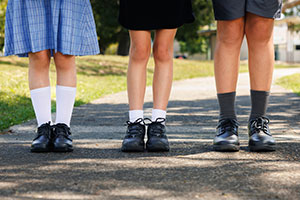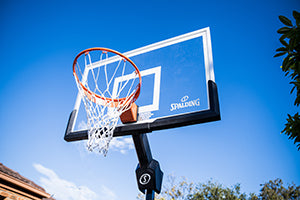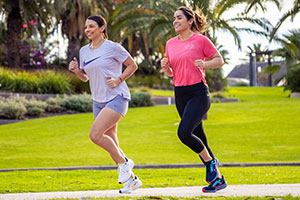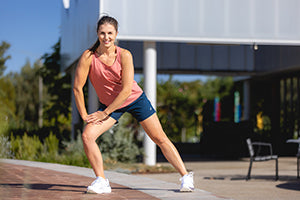Women's Running Shoes
What should you look for in running shoes?
Choosing the right footwear can be a daunting task because of all that you have to get right before you invest in a pair of new shoes. Comfort, size, wearability, durability…the list goes on. The first thing you will need to check is that it is specifically a womens running shoe. Avoid regular sneakers for ladies as they may not provide the right level of comfort and support you will need. The next thing to remember about women’s running footwear is to make sure you have the right fit. Take your time with this one! Not only do you need the right size, but you also need the right shape for your foot. Every woman’s foot is different, and running footwear in multiple fits and styles so you can be sure to find the one that is right for you. Finally, you need to select the right type of running shoe. Will you be needing the shoe for everyday running, competitive running, or off-road running? Each of these activities calls for a different type of shoe, so you should have a good idea of what you will be needing the new running shoes for before you buy.
Is there a difference between women‘s and men‘s running shoes?
Men and women tend to have differently shaped feet, so you will find there is a difference between male and female footwear running. Male running shoes tend to be wider to accommodate the general trend that men have larger feet than women. Notably, womens running shoes are slightly wider in the forefoot and toe part of the shoe but narrower in the heel. Men’s are narrower in the forefoot and toe but wider in the rest of the shoe.
Is it bad for women to wear men’s running footwear?
Generally, womens running shoes are a better fit for most women because they are designed with the female foot shape in mind. However, it is important to note that all women have different foot shapes and sizes. Some may have much wider feet and may find they are more comfortable in men’s running shoes. This is not a bad thing! The most important thing for ladies when purchasing footwear is comfort and support. If they receive a better fit and improved comfort when wearing men’s running shoes, then they should consider opting for these shoes.
How to shop for new running shoes?
You can wear any footwear running you wish, provided you consider the two most critical factors: comfort and support. As some people may find a more suitable fit when wearing men’s running shoes, likewise, some men who have smaller, narrower feet may prefer womens running shoes. Even though the styles of shoes are typically gendered, this does not mean that men cannot wear footwear and vice versa.
What are the best brands of women’s running shoes?
The best womens running shoes are those which are well-made of quality materials. Whether it’s Nike, Adidas, or ASICS, your shoe should provide ample cushioned support on the sole and flexibility in the upper part of the shoe to maximise comfort when running. The best footwear for you will also depend on the shape of your foot as well as your gait. If you tend to have highly arched feet, Nike Air Zoom Pegasus might be the footwear for you. But if you’re a stability runner, that is someone who pronates more than average and needs more middle cushioning, ASICS Kayano might be your best option for you. Most importantly, your new shoe should fit properly and keep the foot supported.
Are women’s running shoes okay for teens?
Many teenagers wear adult shoe sizes for track meets, school sports events, and recreational running. Provided you select a good-quality brand with the cushioning and stability to offer adequate support, upgrading to the next size up is absolutely fine–even if that size is typically included within an adult footwear range.
Sporty and active teens may even find that women’s runners feel more comfortable because footwear designed for school-age kids tend to incorporate less cushioning and support because youth footwear is replaced more often.
Why wear running shoes designed specifically for women?
The typical differences in foot shape and sizing we’ve mentioned, combined with a lighter midsole, influence how women’s feet absorb impact when they run and how running shoes should be engineered to protect and safeguard ankles and feet.
Great-fitting runners are never worth compromising on. Poorly fitting footwear, even top-quality brands, can cause serious problems–such as pain in your arches or tendonitis, which can keep you off the track or road for extended periods.
Shoes created just for women’s sports are built to be narrower in the heel with extra capacity in the toe. This recognises the variations in natural movement patterns and optimises your comfort when running, exercising, and walking.
What are the contrasts between women’s running shoes and other sports shoes?
Footwear designed for running has added functionality, with extra foam support systems and padding and a curve to the sole that helps to improve the efficiency of your stride. While you can wear running shoes for most sports, a walking shoe is usually flatter and isn’t always the best option for running, particularly speed drills, fast-paced track running, and sprints.
If you’re a casual trail runner and enjoy a gentle jog in the morning, this might not make too much difference. However, if you’re training for a longer half or full marathon, compete with a running club, or tend to go for more strenuous runs, that extra comfort can make a huge impact!
Tips on checking that your footwear is the right fit
The ideal pair of women’s running shoes should have around one centimetre of space from the end of your toes to the front of the shoe, with sufficient room in the toe box to wiggle your toes; this allows your feet to naturally expand as you run.
Your footwear shouldn’t slip or slide but shouldn't squeeze your foot. If your runners otherwise feel comfortable, re-lacing might help adjust the fit to your foot size and shape. Some runners use special lacing techniques like a heel lock or runner’s loop to help customise the heel fit.
It’s also worth checking that your heel stays safely in the heel cup without shifting. If you feel your heel moving up and down, you probably need to size down, keeping blisters, rubbing and soreness at bay. Annoyances like rubbing on your toes, tingling in your feet, or red marks around the tops of your toes are all indications that your running shoes are too small, making it better to go for the next size up.
Shop popular brands like Asics, Nike, and more | What INTERSPORT offers
INTERSPORT offers a wide variety of options from popular brands that will help you stay comfortable and agile while making your strides. Whether you run on a treadmill, trails, or sidewalk, you have the option to compare and choose from many different styles and fits from all of your favorite brands. Discover new arrivals that will give you the support you need to tackle your next run.














































































